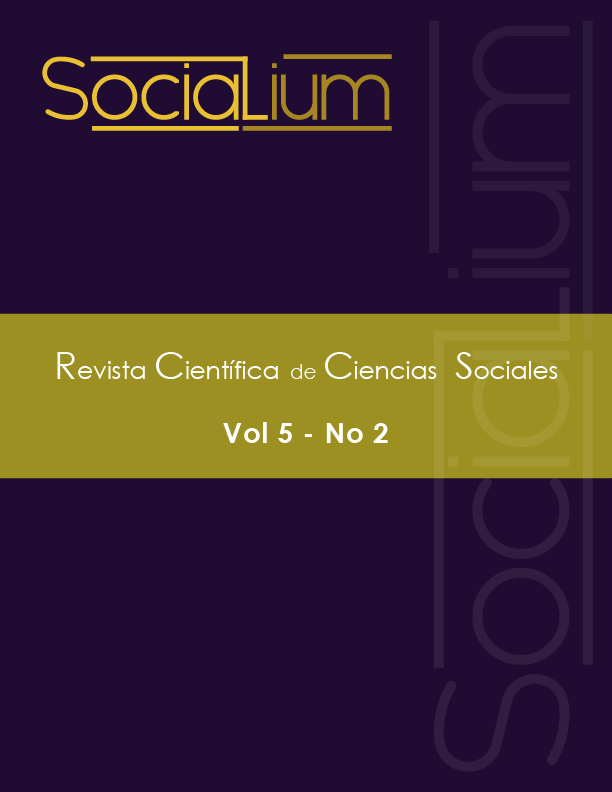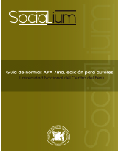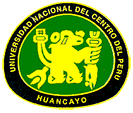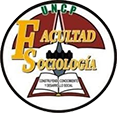Cognitive models in social representations for low self-esteem and alcohol drinking in lyrics of peruvian andean songs
DOI:
https://doi.org/10.26490/uncp.sl.2021.5.2.943Keywords:
thinking, social perception, alcoholism, self-esteem, low self esteemAbstract
The objective was to identify and analyze the cognitive models of predominance that support the social representations for low self-esteem and alcohol intake in the songs of the Peruvian highlands, in a basic, documentary, descriptive and explanatory research, with hermeneutic method. The sample consists of an anthology of 100 songs from the Peruvian highlands, being the inclusion criterion that its contents allude to alcohol and / or low self-esteem. As a theoretical basis for the content analysis of cognitive models was approached from the perspective of the cognitive-behavioral paradigm that support social representations. The results are analyzed in a theoretical articulation of two paradigms in the field of psychology; thesocial representations of Jodelet, as well as the cognitive models of the emotive rational approach of Beck and Ellis. We identify and analyze 18 cognitive models and conclude that thesongs, whose contents allude to alcohol, low self-esteem orboth, express two or more forms of cognitive models that guide behavioral and emotional reactions, such as: guilt and evade responsibility, uselessness, impowerence, fragility and helplessness, dichotomous thoughts and / or feelings, hope in the extrahuman, victimization, self-blame and deservedness, absolutism of all or nothing, evocation of the past; evasion, abandonment and suicidal ideation, absolute need for affection and companionship, susceptibility to fraud and betrayal, fixation on the negative, anticipation of results, absolutism of the always or never, fear of the unknown, magnification or catastrophization, jump to conclusions and disqualification of the positive.
References
Álvarez, J. (2003). Cómo hacer investigación cualitativa: Fundamentos y Metodología. Paidós.
Arráez, M., Calles, J. y Moreno de Tovar, L. (2006). La Hermenéutica: una actividad interpretativa. Sapiens. Revista Universitaria de Investigación. 7(2), 171-181. https://www.redalyc.org/articulo.oa?id=41070212
Cabrera, R. (2012). El canto como herramienta terapéutica para mejorar la salud emocional de la mujer. [Tesis de pregrado, Universidad de San Carlos de Guatemala]. Repositorio institucional USAC. http://www.repositorio.usac.edu.gt/10629/
Ministerio de Educación y Consejo Nacional de Educación (2007). Proyecto Educativo Nacional al 2021.
http://www.minedu.gob.pe/DeInteres/xtras/PEN-2021.pdf
Colomo, E. (2013). Análisis pedagógico de los valores presente en las letras de las canciones. [Tesis doctoral, Universidad de Málaga]. Repositorio Institucional UMA. https://riuma.uma.es/xmlui/handle/10630/6865
Ellis, A. y Dryden, W. (1989). La práctica de la Terapia Racional Emotiva (RET). Desclée de Brouwer.
Gil’ Adí, D. (2000). Inteligencia emocional en práctica. McGraw-Hill Interamericana.
Graham, F. y Welch, G. (2007, 6 de febrero). El canto como un modo de comunicación [conferencia]
Key-note for 4th Annual Meeting of SACCoM, Tucumán, Argentina. http://saccom.org.ar/v2016/sites/default/files/Welch%20El%20canto%20como%20un%20modo%20de%20comunicaci%C3%B3n.pdf
Hernández, R. y Mendoza, C. (2018). Metodología de la investigación: Las rutas cuantiaba, cualitativa y mixta. McGraw-Hill Interamericana.
Hurtado, W. (1995). Chicha Peruana. ECO.
Jodelet, D. (1993). La representación social: Fenómeno, concepto y teoría.
En S. Moscovici (Ed.), Psicología social (pp. 469-494). Paidós.
Lara, E. (2004). Teoría de las representaciones sociales: Sobre la lírica de los Narcocorridos. Nómadas. Revista Crítica de Ciencias Sociales y Jurídicas, (9), 0. https://www.redalyc.org/pdf/181/18100913.pdf
Ministerio de Educación y Consejo Nacional de Educación (2007). Proyecto Educativo Nacional al 2021.
http://www.minedu.gob.pe/DeInteres/xtras/PEN-2021.pdf
Montoya, L. (1987). Canción quechua, historia y región en las provincias altas del sur Andino. [Tesis doctoral inédita]. Universidad Nacional Mayor de San Marcos.
Pardo, M. (2018). Develándome, el arte del canto como mediador del proceso transformador. [Tesis de especialización, Universidad Distrital Francisco José de Caldas].
Repositorio Institucional UDFJC. https://repository.udistrital.edu.co/bitstream/handle/11349/14903/PardoRuizMar%C3%ADaCristina2018.pdf?sequence=1
Perú 21. (2017, agosto 31). ¿Sabes cuánto invierte el Perú en educación? El BID nos brinda algunas cifras. Perú 21. https://peru21.pe/peru/invierte-peru-educacion-373881-noticia/?ref=signwall
Rodríguez, F. (2020). Psicología de los incomprendidos. Editorial San Marcos.
Rodríguez, F. y Uriol, A. (2018). ¡Canta, canta, que algo queda! Lectura Viva Ediciones.
Rojas, L. (2013). Análisis discursivo de la canción de la cotidianidad: “soy muchacho provinciano”. Escritura y Pensamiento, 16 (33), 25-36. https://doi.org/10.15381/escrypensam.v16i33.8187
Stein, S. (1982). El vals criollo y los valores de la clase trabajadora en Lima de comienzos del siglo XX. Serie Socialismo y Participación, (17), 43-49.
Tamayo y Tamayo, M. (2009). El proceso de la investigación científica. Limusa.
Zapata, S. (1968). Psicoanálisis del vals peruano. Revista de ciencias psicológicas y Neurológicas, 5, 5-61.
Downloads
Published
Issue
Section
License
Copyright (c) 2021 Antonieta del Pilar Uriol Alva, Fredy Fernando Rodríguez Canales

This work is licensed under a Creative Commons Attribution 4.0 International License.








.jpg)















